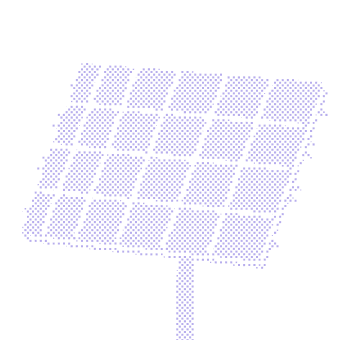Energy yield assessment. Why does it matter for solar project success?
.png/a3c245c1c714afd7b51fed256f453fe7/featured-(10).webp)

An accurate energy yield assessment is necessary to build trust between developers and investors and ensure expected solar panel financial delivery. It provides realistic utility scale yield forecasting, optimizes system design, and minimizes risks.
However, traditional yield assessments usually come with a 5% to 11% uncertainty range, according to a study by the IEA PVPS. So, precise energy production modeling while leveraging advanced technology is essential to secure financing.
In this article, we’ll delve into what exactly is energy yield, its importance, and how to properly calculate it to ensure successful project development.
What is energy yield?
Energy yield refers to the amount of usable electricity that a solar PV system generates over a specific period of time, usually measured in kilowatt-hours (kWh) or megawatt-hours (MWh).
An energy yield assessment estimates how much energy a solar system will produce, taking into consideration such factors as environmental conditions, sunlight availability, system efficiency, and tilt.
Why is accurate energy yield assessment important?
Solar yield calculation helps ensure the success of utility-scale projects, including their profitability. Here are some of the main energy yield assessment benefits:
Evaluates financial viability and risks
Solar power system investors and money lenders require energy yield assessments to understand whether a project will be financially viable. Even small inaccuracies in commercial solar yield analysis could cause large financial losses. One research found that energy yield predictions in 26 tested solar projects were off by around 8%.
Inaccuracies can be caused by snow, climate variability, dirt, system part damage, and more. So, energy yield assessments must carefully take into consideration all necessary aspects, including weather conditioning or system degradation, to minimize risks and ensure realistic returns.
Optimizes system design
Energy yield assessment helps engineers and developers optimize the solar system design. This includes selecting appropriate solar panel types and panel tilt, orientation, or other aspects to maximize solar energy output.
For example, a study by Prunier and others found that solar panel reorientation twice per year resulted in 3% to 4.8% higher annual energy production.
Enables performance benchmarking
Energy yield assessment ensures clear expectations are set in terms of how much energy should be produced. It enables comparing the actual solar energy power output to the predicted output.
If the difference is huge, an assessment helps understand when something might be wrong. Here are a few possible issues:
Damage to solar panels or dirt (research by NREL discovered that dust accumulation can cause up to 7% of energy loss annually in some areas of the US)
A change in weather conditions (for instance, very snowy climates can cause up to 15% energy reduction according to a report by NREL)
Solar panel parts may not be working properly (like inverters)
Without energy yield assessment, it would be harder to understand whether the system is performing as expected.
Supports warranty and insurance claims
Solar panel manufacturers usually provide performance guarantees depending on the expected yield. The National Renewable Energy Laboratory (NREL) found that only 0.05% of solar panels fail annually, and most of them meet performance requirements. However, energy yield assessments help back up warranty claims if the performance of panels significantly drops.
Meanwhile, if the solar system gets damaged by weather conditions, such as wind, wildfires, or hail, energy yield assessment helps measure the damages. They give a baseline of what the system would’ve produced before the damage.
How to calculate energy yield
Calculating energy yield means evaluating the solar power system’s technical specifications and combining them with environmental condition data. To calculate accurate energy production estimates, leverage PVcase Yield for energy modeling.
Its accuracy and reliability are consistently proven through rigorous validation against real-world data from diverse utility-scale plants in Spain and Italy. Furthermore, an independent study confirmed PVcase Yield's comparable performance to industry-standard tools, with energy yield differences ranging from a minimal 0.24% to 2.4%.


Revolutionizing solar energy modeling with advanced technology
Learn about the best-in-class yield estimation solution that moves high-performance projects to the light of day.
